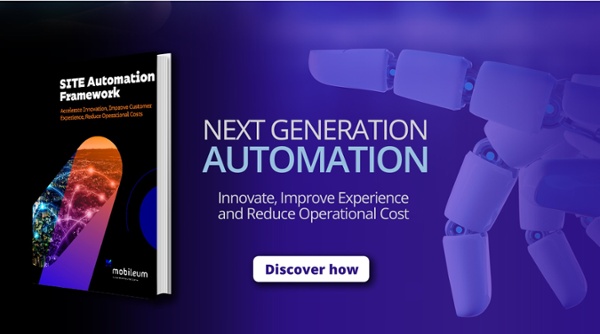Network enhancements that not long ago would be unthought-of or only seen in science-fiction scenarios bring an unprecedented set of challenges to operators. As we move towards 5G with ultra-high speeds, smarter-than-ever solutions, and omnipresent connectivity, networks must orchestrate seamless, smooth, and uninterrupted services such as enhanced mobile broadband, AR/VR use cases, HD video streaming, voice, data, and messaging. All these services must be built and operated on a labyrinth of new and legacy technology generations, entangled with a multitude of devices and protocols, all running in parallel.
While operators optimize their platforms to make the network conundrum work, they must meet the expectations of increasingly demanding customers and businesses. Additionally, the horde of fierce competitors armed with both promises and concrete deliverables are always ready to grab their piece of the market. We are way past the time where customer satisfaction was only a cliché.
The question is: How to guarantee the quality of service and quality of experience imperative in such an intricate scenario while fostering innovation and keeping costs in check?
It is evident that testing and monitoring strategies are indispensable to deliver the required quality. However, with the fast pace of service and software rollouts that are taking over modern networks, additional methods and processes need to be introduced.
Truth be told, labor-intensive and error-prone manual processes have become prohibitively expensive and operationally impossible, no longer being able to fully address the complexity of network design, technology integration, deployment, operation, and maintenance. To address ultra-complex and fast-paced scenarios and minimize the risks of failure that can lead to customers churning out of subscriptions and consequently leading to revenue loss, enhanced testing strategies, and automated processes are mandatory.
Automation framework accelerates innovation, improves customer experience, and reduces operational costs by providing a set of tools and methods to enhance automate testing and automate various processes, such as methods of procedure (MOPs), acceptance test processes (ATP), and regression, removing the overhead of repetitive tasks and allowing engineers to focus on innovation and customer experience. The automation framework can be used at all stages of the network lifecycle and boosts the end-to-end active test data with input from third-party tools or various network functions allowing much faster troubleshooting of multi-vendor networks and complex service issues.
One crucial aspect to consider when planning the automated testing strategy is to determine whether it is a standalone solution or if it must be integrated into larger automation processes, such as continuous integration/continuous delivery CI/CD pipelines. They will play a fundamental role for 5G to carry through its full potential. Unlike previous generations of mobile networks, 5G core is built on a modular architecture and uses cloud-native technologies to support a broad range of use cases, where slices lodge network functions composed by a range of microservices running in a common shared data environment.
For 5G networks to evolve over time operators must be able to develop, deploy, and upgrade new network functions in an agile, predictable, and reliable manner. CI/CD will allow 5G operators to perform frequent and many times very granular changes, with automatic scaling in and scaling out, and the possibility to decommission a previous slice while using the new version in their environment.
Choosing a flexible automation framework is fundamental as it renders the capacity to orchestrate and interoperate with CI/CD tools such as Jenkins, CircleCI, AWS CodeBuild, Azure DevOps, analytics, or data feed tools like Splunk or Kafka, and even communication tools like Slack. Moreover, an automation framework that uses RESTful API adds a continuous testing component, which ensures that tasks are not broken whenever new changes are incorporated, for instance, after a software upgrade.
An additional benefit of implementing an automation framework is that it offers flexibility in defining automation scenarios. This is achieved by providing a variety of low-level building blocks that can be used to construct various of automation tasks using simple keyword-driven scripting. Keywords are linked to a specific action or feature, allowing users to create maintainable, scalable, and reusable automation processes. Existing test cases or processes can also be easily parametrized and run ad-hoc or regularly, depending on the use case, considerably supporting day-to-day operations.
The course of action that operators take toward quality assurance may not coincide in time, but it is undeniable that the current enhanced automated testing trend powered by automation frameworks will sooner or later become the norm thoroughly integrated into quality strategies.




Let Us Know What You Thought about this Post.
Put your Comment Below.